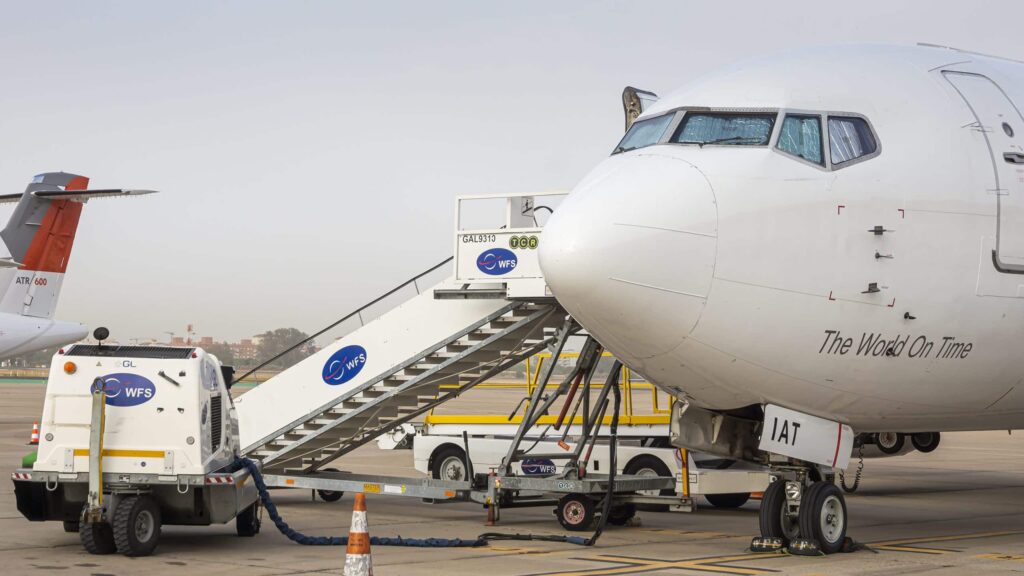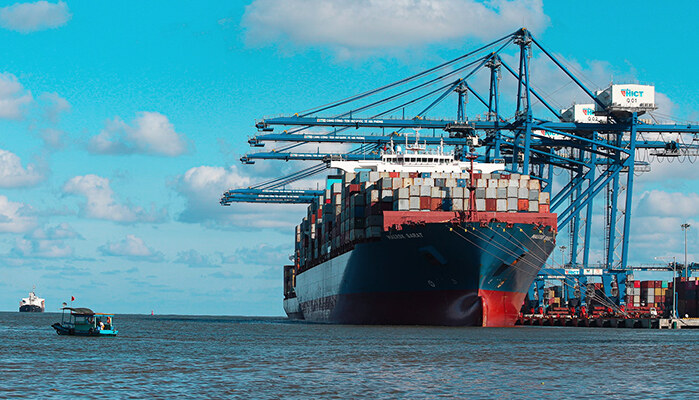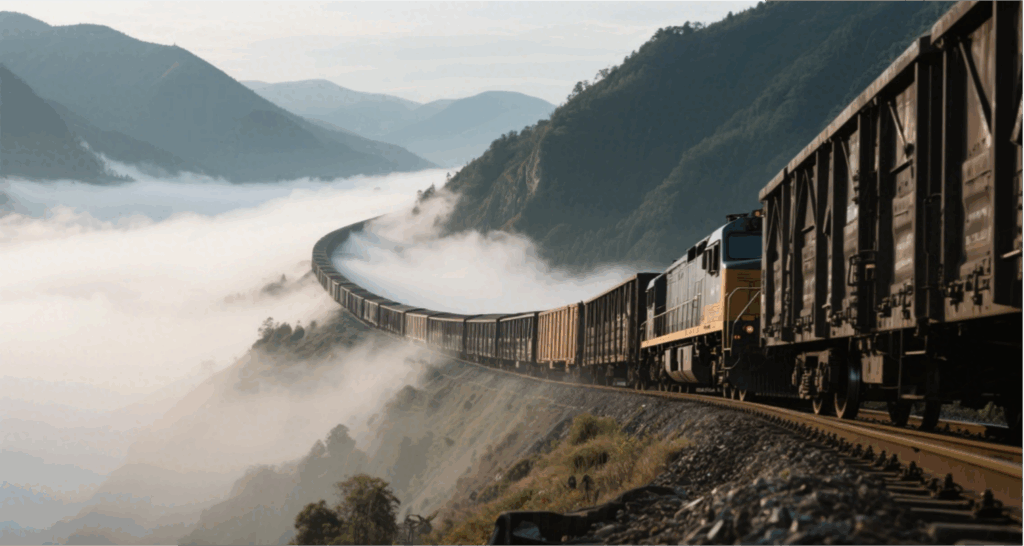- By Della tj
- October 31, 2025
- Rail Freight, Shipping
International businesses increasingly rely on reliable rail freight from Shenzhen to Spain to balance speed, cost, and sustainability. This growing logistics solution provides an efficient middle ground between expensive air freight and slow sea transport, ensuring goods arrive faster while reducing environmental impact. For companies seeking stable and affordable cross-border shipping, rail freight is a game changer.
What Makes Rail Freight from Shenzhen to Spain Reliable?
The rail connection between Shenzhen and Spain operates through the well-established China–Europe Railway Express, linking major Chinese manufacturing hubs to European logistics centers such as Madrid, Zaragoza, and Barcelona.
Reliability comes from advanced scheduling, standardized containers, and consistent customs coordination. Trains operate multiple times per week, ensuring dependable delivery for manufacturers and retailers.
| Feature | Rail Freight | Air Freight | Sea Freight |
|---|---|---|---|
| Average Transit Time | 18–22 days | 5–7 days | 35–45 days |
| Cost per kg (avg) | $2.5–$4.0 | $6–$10 | $1–$2 |
| Environmental Impact | Low CO₂ | High CO₂ | Moderate CO₂ |
| Reliability | High | Very High | Moderate |
Additionally, the railway system minimizes disruptions caused by port congestion or flight capacity limits. As a result, it has become a stable choice for electronics, textiles, machinery, and consumer goods exporters.
How Long Does Rail Freight from Shenzhen to Spain Take?
Transit time usually ranges from 18 to 22 days, depending on the departure schedule, route congestion, and customs processing at both borders. Compared with sea freight’s 40-day duration, rail freight provides nearly 50% time savings.
The route passes through China, Kazakhstan, Russia, Belarus, Poland, France, and finally into Spain, supported by well-managed transloading hubs to switch between rail gauges efficiently.
| Destination City in Spain | Estimated Transit Time (Days) | Typical Route |
|---|---|---|
| Madrid | 18–20 | Shenzhen–Chongqing–Duisburg–Madrid |
| Barcelona | 19–21 | Shenzhen–Xi’an–Warsaw–Barcelona |
| Zaragoza | 20–22 | Shenzhen–Chengdu–Hamburg–Zaragoza |
Moreover, dedicated logistics partners ensure that customs documentation, inspection, and cargo tracking are handled simultaneously to prevent unnecessary delays.
What Are the Main Benefits of Reliable Rail Freight?
Rail freight combines cost efficiency, environmental sustainability, and schedule reliability in one service. The benefits include:
- Stable Transit Time: Rail lines follow fixed schedules, reducing uncertainty.
- Lower Carbon Emissions: Rail emits 70% less CO₂ than air freight.
- Balanced Cost: It’s cheaper than air but faster than sea freight.
- Security: Containers are sealed and monitored throughout the route.
- Door-to-Door Options: Many providers now integrate rail with trucking for final delivery across Europe.
Furthermore, rail freight supports multimodal logistics, allowing integration with road, sea, and air for customized supply chain solutions.
What Documents Are Needed for Rail Freight from China to Spain?
Proper documentation ensures smooth customs clearance and on-time delivery. Missing paperwork often causes delays, so shippers should prepare all essential files in advance.
| Document Type | Purpose |
|---|---|
| Commercial Invoice | Details product description and value |
| Packing List | Confirms packaging, quantity, and weight |
| Bill of Lading (Rail Waybill) | Acts as proof of shipment |
| Certificate of Origin | Identifies product origin for tariffs |
| Export License | Required for controlled goods |
| Customs Declaration Form | Submitted to Chinese and EU authorities |
| Insurance Certificate | Covers potential damage or loss |
Additionally, using experienced customs brokers ensures compliance with EU import regulations and helps avoid fines or shipment holds.
Real Case Studies: Shenzhen to Spain Rail Freight Success
Case 1: Electronics Manufacturer (Shenzhen → Madrid)
Cargo: 10 tons of consumer electronics
Mode: Full Container Load (FCL)
Cost: $3,800 per container
Transit Time: 19 days
Outcome: Saved 20 days versus sea freight and 45% costs versus air freight.
Case 2: Textile Supplier (Shenzhen → Barcelona)
Cargo: 8 tons of apparel
Mode: LCL (Less than Container Load)
Cost: $3.2 per kg
Transit Time: 21 days
Outcome: Achieved timely delivery for seasonal collection launch, avoiding air freight surcharges.
How Much Does Rail Freight from Shenzhen to Spain Cost?
Pricing depends on shipment type, size, weight, and delivery requirements. While sea freight remains cheapest, rail provides exceptional value for medium-urgency shipments.
| Shipping Mode | Typical Cost per CBM (USD) | Transit Time (Days) | Best For |
|---|---|---|---|
| Air Freight | $8–$12 | 5–7 | Urgent, lightweight cargo |
| Sea Freight | $1.5–$2.5 | 35–45 | Non-urgent bulk goods |
| Rail Freight | $2.8–$4.0 | 18–22 | Medium-priority shipments |
Moreover, costs are stable year-round compared with the volatile air freight market. Rail’s predictability makes it ideal for long-term logistics contracts.
Why Choose Rail Freight Over Air or Sea Freight?
Each transportation mode offers unique strengths, but rail freight is increasingly becoming the most balanced choice.
| Factor | Rail Freight | Air Freight | Sea Freight |
|---|---|---|---|
| Speed | Medium (18–22 days) | Fast (5–7 days) | Slow (35–45 days) |
| Cost | Moderate | High | Low |
| Carbon Emission | Low | Very High | Moderate |
| Capacity | Large | Limited | Very Large |
| Weather Impact | Minimal | High | Moderate |
Additionally, rail freight is less affected by geopolitical tensions or fuel price volatility, which often impact air and sea routes.
How to Ensure Smooth Customs Clearance in Rail Freight
Although customs clearance in rail logistics is generally faster than sea ports, attention to documentation and compliance is crucial.
To ensure smooth processing:
- Verify product HS codes and tariffs.
- Ensure invoices match declared goods.
- Use a logistics provider with EU Authorized Economic Operator (AEO) certification.
- Include insurance and inspection certificates.
- Pre-submit electronic customs data to reduce clearance delays.
On the other hand, failing to comply with export control policies can result in shipment detention or re-exportation. Therefore, working with an expert freight forwarder simplifies this process.
Conclusion
In today’s competitive market, reliable rail freight from Shenzhen to Spain offers the perfect blend of speed, affordability, and eco-efficiency. It provides a dependable logistics channel connecting Asia and Europe, allowing businesses to maintain smooth supply chains and predictable delivery times.
By choosing rail, companies reduce costs, lower emissions, and gain faster turnaround without compromising on reliability. Whether transporting electronics, textiles, or auto parts, rail freight ensures safe and timely delivery every time.
In summary, investing in reliable rail freight strengthens your logistics resilience and ensures long-term success in cross-border trade. Contact your trusted logistics partner today and experience the benefits of sustainable rail transportation from Shenzhen to Spain.
- Consult TJ China Freight Forwarding for the lowest quote. They will provide you with reliable, cost-effective service.
FAQs
Q1.How long does rail freight take from Shenzhen to Spain?
Rail freight usually takes 18–22 days, depending on customs processing, route conditions, and final destination in Spain.
Q2.What types of goods are suitable for rail freight shipping?
Most electronics, textiles, machinery, and auto parts are ideal for rail freight due to balanced cost and delivery speed.
Q3.Can rail freight shipments include door-to-door delivery?
Yes, rail services can integrate trucking in China and Spain, offering complete door-to-door delivery solutions.
Q4.What are the average rail freight costs per container?
Costs range from $3,500–$4,000 for a 40-foot FCL container, depending on cargo type and service level.
Q5.Is rail freight from Shenzhen to Spain environmentally friendly?
Absolutely. Rail freight produces significantly lower CO₂ emissions than air freight and is part of sustainable logistics trends.




